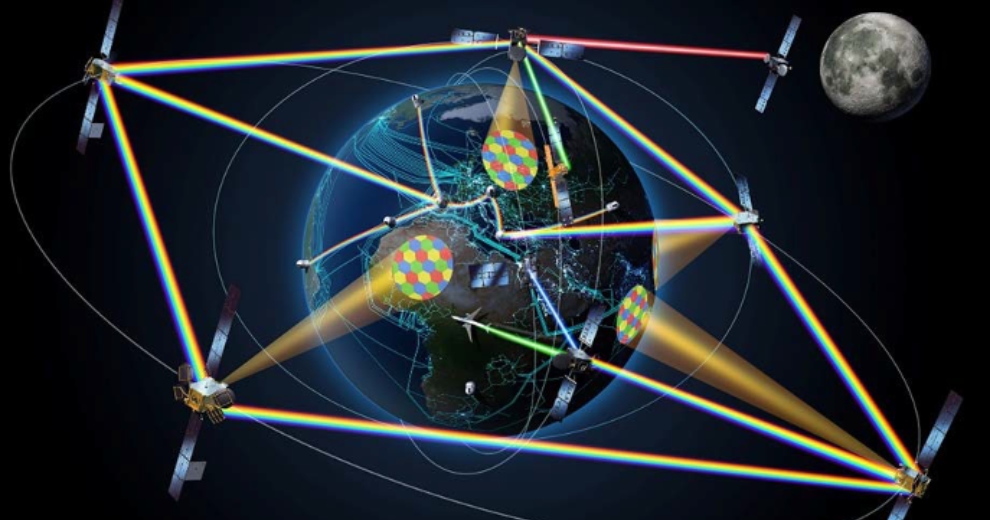Free space optics (FSO) communication, also known as optical wireless, is an optical networking technology that uses light propagating in free space to transmit data for telecommunications and computer networking. FSO is a line-of-sight technology that establishes broadband connections through atmosphere. With increasing demand for high bandwidth data transmission, FSO technology holds huge potential to transform connectivity and boost networks globally.
How Does FSO Work?
In FSO communication, data is transmitted through beams of infrared or visible light between two terminals. The transmitting terminal consists of a laser diode or LED to generate light which is focused using a lens or mirror setup. The receiver uses a photo-detector (usually a silicon PIN photodiode) to detect the light signal and convert it to electrical current for data reception.
Some key components involved in an Free Space Optics Communication link include:
– Transmitter: It converts an electrical input signal into modulated light. Semiconductor lasers and LEDs are commonly used light sources.
– Receiver: It receives the optical signal and converts it back into an electrical signal. Photodiodes are typically used as photo detectors.
– Modulation: Digital data is encoded onto the light beam using digital modulation techniques like On-Off Keying (OOK) or Orthogonal Frequency-Division Multiplexing (OFDM).
– Lens/Mirrors: Precision optics like lenses and mirrors collimate and focus the light beam over long distances to overcome signal dispersion and divergence. Tracking mechanisms may also be used.
FSO operates in unregulated portions of the optical spectrum between 780nm-1600nm allowing high bandwidth communication through free space. Data rates from below 1 Gbps up to several Gbps can be achieved over distances from a few hundred meters up to a few kilometers.
Advantages of FSO Technology
Some major advantages of FSO over conventional wired technologies include:
– High Speed Data Transmission: FSO links support high bandwidth connectivity of over 1 Gbps, even up to 10 Gbps with the latest technologies. This meets the ever-growing needs for high-speed connectivity.
– Rapid Deployment: FSO systems are easy to set up and relocate. Free space links can be established quickly without the need for cable deployment and laying of fiber optic cables.
– License-Free Operation: FSO systems operate in unlicensed portions of the light spectrum and do not require costly wireless spectrum licenses for operation.
– Low Upfront Costs: Capital costs for deploying FSO links are much lower compared to installing fiber cables across long distances or leasing bandwidth on microwave towers.
– Scalability: FSO connectivity can easily scale up or down according to bandwidth requirements and is easily upgradeable with the introduction of newer modulation standards.
– Less Susceptible to Environmental Factors: FSO transmissions are affected less by rain, fog, dust etc. compared to microwave links. However, strong weather conditions can still degrade performance.
Potential Applications
With the above advantages, FSO technology is well-suited for various applications:
– Last Mile Connectivity: Providing high-speed broadband to homes and enterprises in developing regions lacking communication infrastructures.
– Mobile Backhaul: Delivering connectivity between cell towers for cellular network backhaul without dependence on fiber or microwave spectrum.
– Enterprise Connectivity: Establishing private connectivity within campus environments and between enterprise buildings.
– Disaster Recovery: Deploying pop-up broadband networks in relief/rescue operations during natural calamities.
– Offshore Connectivity: Enabling high-bandwidth links between offshore oil rigs, ships and coastal areas.
– Rural Connectivity: Bridging the digital divide in remote/rural regions through fast broadband connectivity.
– Military Communications: Facilitating optical connectivity in tactical military scenarios without relying on infrastructure.
Technological Advancements
Major technological advancements continue to increase the capabilities of FSO solutions:
– Dense Wavelength Division Multiplexing (DWDM): Using multiple wavelengths simultaneously increases optical bandwidth per FSO link.
– Advanced Modulation Techniques: QAM, OFDM etc have augmented throughput reaching multi-gigabit capacities per link.
– Precise Alignment Systems: State-of-the-art beam steering and tracking subsystems stabilize links even in adverse weather.
– Integrated Transceivers: Monolithic integration of emitter, receiver and control electronics miniaturizes devices for mobility.
– Adaptive Coding & Modulation: Real-time variation of modulation formats optimizes performance according to weather dynamics.
– Multiple-Input Multiple-Output (MIMO) Configurations: Using multiple apertures with parallel streams boosts capacity and reliability.
The Future of FSO
As FSO networking becomes more sophisticated, dense and cost-effective, it could emerge as a primary connectivity medium even replacing fiber in core networks. Major deployment initiatives are already underway especially in underserved regions across Asia, Africa and South America. With the onset of 5G and beyond networks, we will likely witness FSO playing an integral role in dense urban access deployments as well as mobile backhaul requirements. As an all-optical wireless technology requiring no spectrum licensing, FSO communications hold tremendous potential to bridge the global digital divide and boost connectivity for all in the coming decade.
*Note:
1. Source: Coherent Market Insights, Public sources, Desk research
2. We have leveraged AI tools to mine information and compile it


